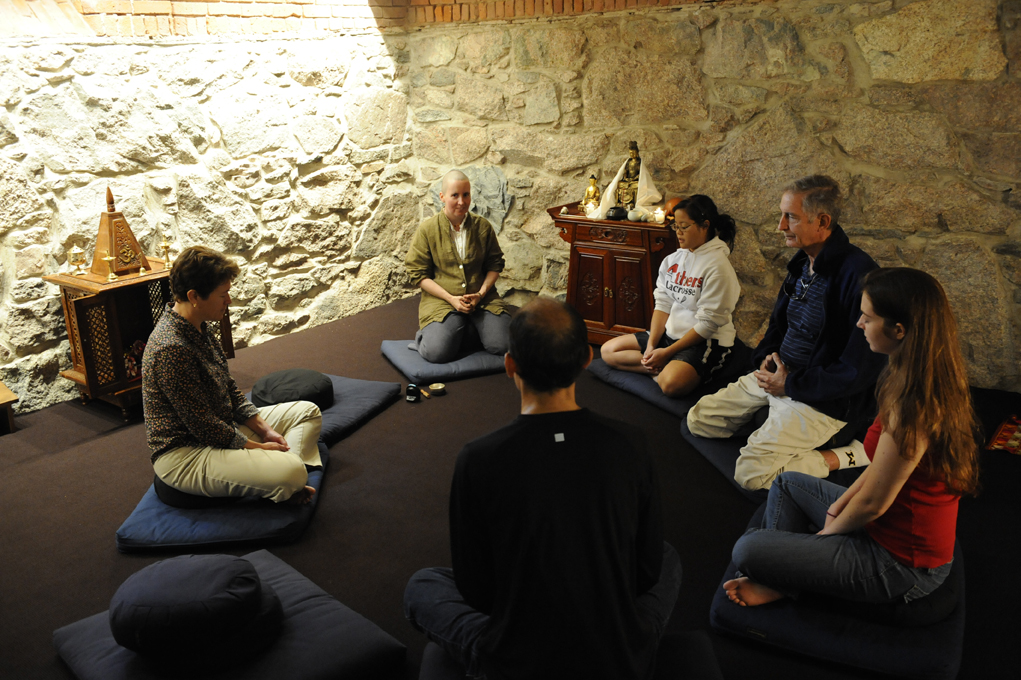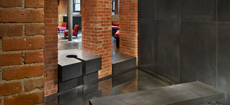Wellesley Welcomes New Multifaith Center
Members of the college community use the meditation room within the Multifaith Center at Wellesley College.
Our renovations at Wellesley College's Houghton Chapel and Multifaith Center were completed in the spring of 2008. In this article from Wellesley magazine, alumna Jana Reiss discusses students' dreams for the space, and the hum of activity happening there now.
A Chapel for the 21st Century
By Jana Reiss ‘91
Back in 1972, the Rev. Paul Santmire, then College chaplain, fired off a memo to Barbara Newell, Wellesley's president at the time. “The Chapel was completed before the turn of the century. Not much in the way of substantive renovation has been done since 1900 . . . ,” he wrote, clearly frustrated. And then he went on to list all the ways Houghton Chapel had fallen apart: The lighting was bad, electrical circuits archaic, the interior brickwork in need of attention, the basement “unusable,” and the “minister's study . . . an embarrassment.”
Victor Kazanjian, the College's current dean of religious and spiritual life, smiles knowingly when he talks about this memo, which he found in the Wellesley Archives, because the problems are more than familiar to him. “Thirty years [after Santmire's memo], nothing had been done,” he says. By early in this decade, virtually every wire, pipe, and system in the building needed to be replaced. The chapel also needed soundproofing (everything that happened on one floor was audible on the other) and up-to-date fire protection.
Moreover, the haphazard and dank basement spaces that had been carved out for the campus' religious groups were woefully inadequate. Muslim students would slip in five times a day to pray in what was essentially a storage closet, and the 1950s Little Chapel didn't necessarily fit the needs of an increasingly diverse religious community.
Kazanjian and his students began to dream aloud about what the building could become. “We wanted a space that both met the religious needs of the Wellesley community, but also was an environment that reflected our broadest hopes for how spirituality was part of our students' lives,” says Kazanjian.
Continue reading






